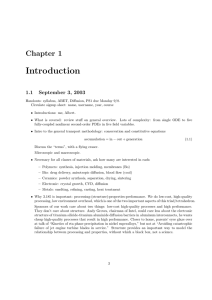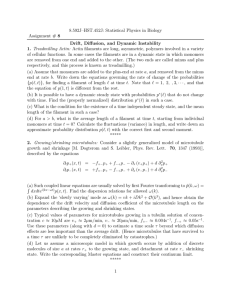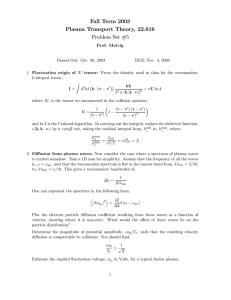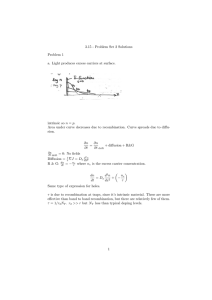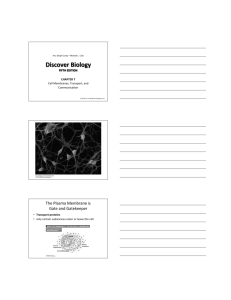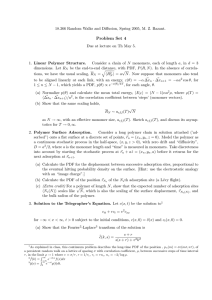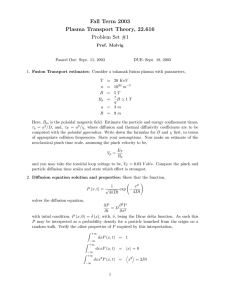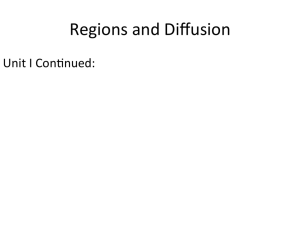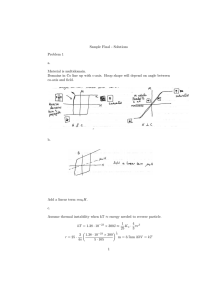3.15 - Problem Set 1 Solutions 2. a. (i) (ii)
advertisement
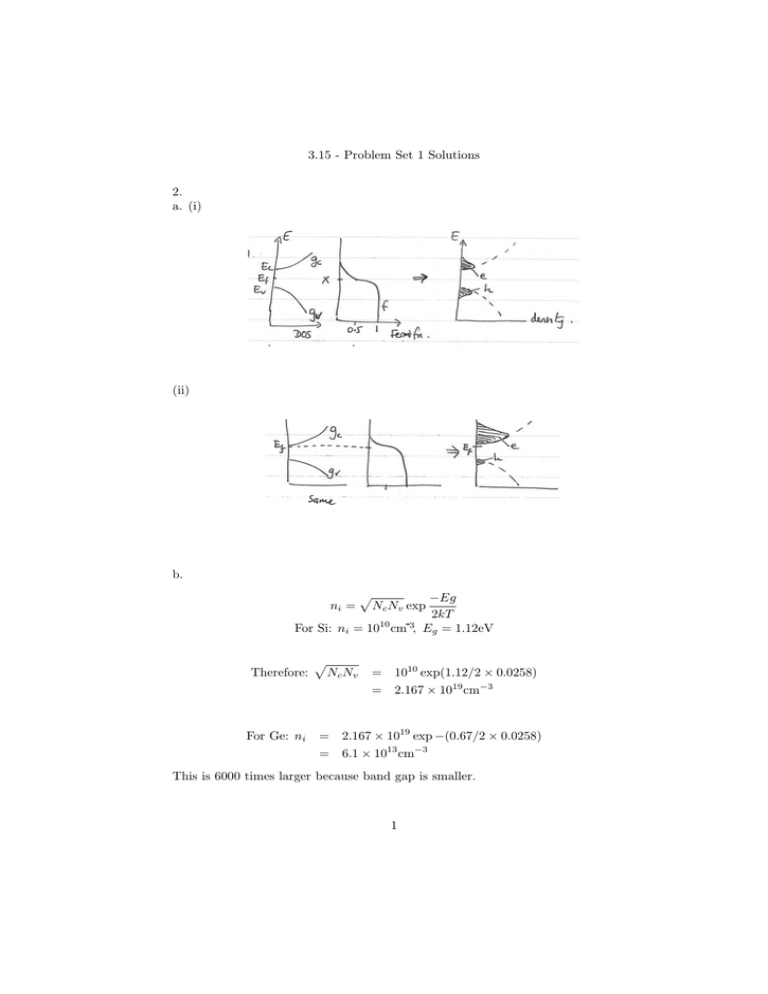
3.15 - Problem Set 1 Solutions 2. a. (i) (ii) b. � −Eg Nc Nv exp 2kT For Si: ni = 1010 cm-3, Eg = 1.12eV ni = Therefore: � Nc Nv = 1010 exp(1.12/2 × 0.0258) = 2.167 × 1019 cm−3 2.167 × 1019 exp −(0.67/2 × 0.0258) = 6.1 × 1013 cm−3 For Ge: ni = This is 6000 times larger because band gap is smaller. 1 c. This is compensated (donors and acceptors cancel). Since NA = ND , Ef = Ei , and n = p = ni . Difference between Ei and midgap: Ei m∗p 3 midgap + kT ln ∗ 4 mn 3 = × 0.0256 ln 100 4 = 89 meV = d. Lower because compenstated material’s dopants scatter carriers, lowering mobility. 2 Problem 3 a. As T increases, µ decreases As doping level increases, µ decreases As lattice defects increase, µ decreases All since greater scattering µ = eτ m∗ . Also, µ is lower for heavier carriers. b. p type: p = NA = 1018 cm−3 for both temperatures. Fully ionized. Hot End: n = 105 cm−3 = n2i /NA Cold End: n = 102 cm−3 So we have diffusion of electrons until the electric field balances the concentra­ tion gradient. Neglect hole diff. Thermal R & G occurs everywhere, but more carriers at hot end. Jn = eDn dn = enµn � at steady state. Diffusion = Drift. dx Concentration Gradient = 106 − 102 −3 cm ≈ 106 cm−4 1cm Substitute: Dn = kT µn /e dn = enµn � dx kT dn �= en dx Therefore, kT µn At the hot end: n = 106 cm−3 , � = kT 106 cm−4 kT · = = 0.026V/cm e 106 cm−3 e 3 At the cold end: n = 102 cm−3 , � = 260V/cm. 4 Problem 4 x=0, 0.67 eV x=0.2, 0.76 eV x=0.8, 1.01 eV x=1.0, 1.1 eV Intrinsic - assume Ef is very close to midgap. Electrons ← drift due to band slope. Electrons → diffuse since more e− in narrow gap. Holes → diffuse. Holes ← drift. The only R & G is thermal. 5 Problem 5 Light produces excess carriers at surface. Intrinsic so n = p. Area under curve decreases due to recombination. Curve spreads due to diffusion. ∂n ∂n = + diffusion + R & G. ∂t ∂t drift Drift → 0 because no fields. 2 Diffusion → 1e �J = 1e ddxn2 . −ne R & G: dn dt = τ where ne = excess carrier concentration. ne dn d2 n = Dn 2 + − dt dx τ Same type of expression for holes. τ is due to recombination at traps, since it’s intrinsic material. These are more effective than band to band recombination but there are relatively few of them. τ = 1/r2 Nτ . r2 >> r but Nτ < typical. 6
